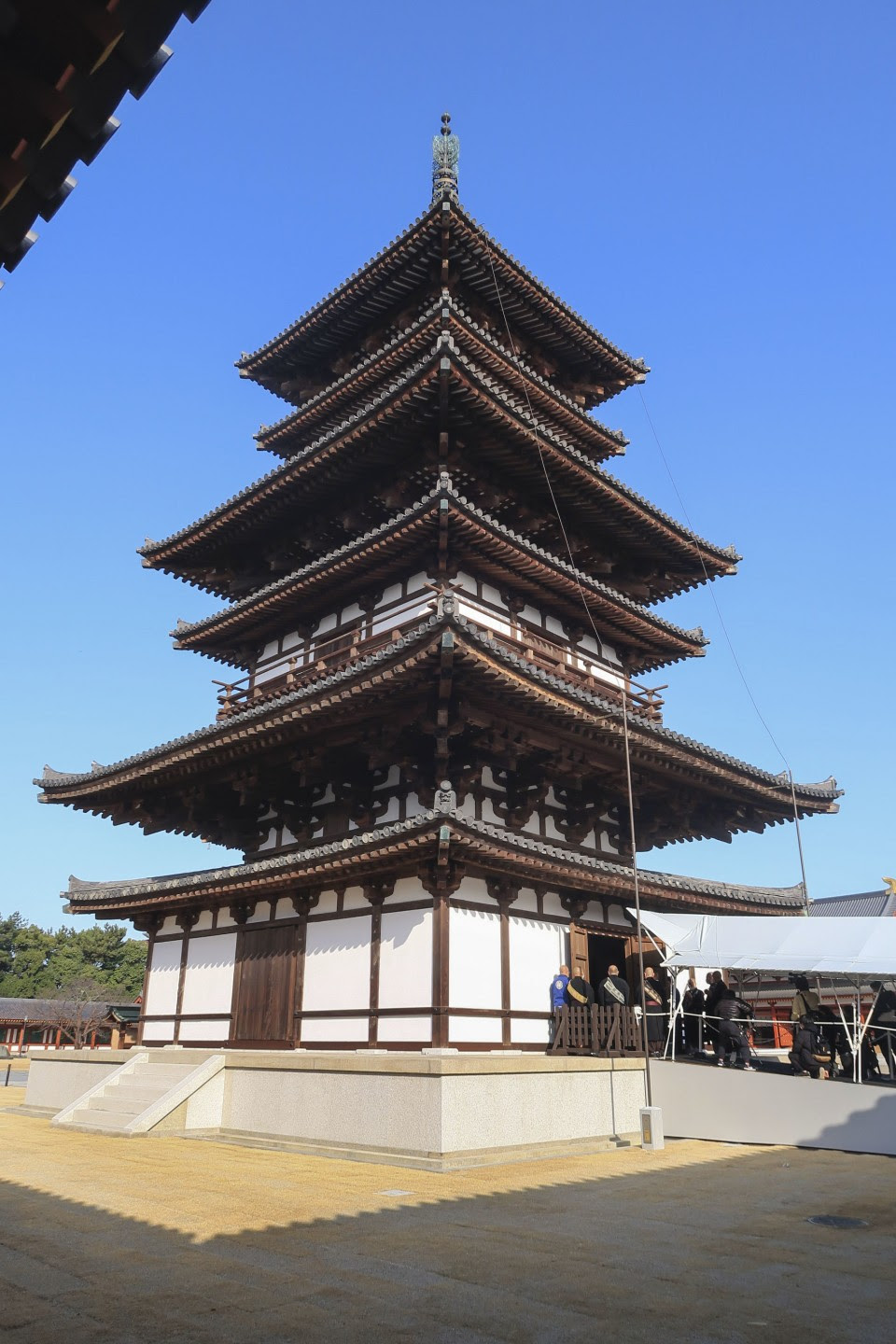By – Shyamal Sinha
Yakushi-ji is one of the most famous imperial and ancient Buddhist temples in Ja
The main object of veneration, Yakushi Nyorai, also named “The Medicine Buddha”, was one of the first Buddhist Deities to arrive in Japan from China in 680, and gives the temple its name.
A national-treasure pagoda at Yakushiji, a Buddhist temple listed as a World Heritage site in Japan’s ancient capital of Nara, was partially opened to the public Monday following its first renovation in more than 100 years.
The East Pagoda, believed to be the sole remaining wooden structure from when the temple was first constructed over 1,300 years ago, is available to view until Jan. 16 next year.

Priests of the temple in the western Japan city chanted as the first floor door of the three-story pagoda was opened at around 8:30 a.m. Visitors, restricted from going inside the structure itself, were allowed onto a platform surrounding the door and leaned forward to observe the central pillar and an artwork displayed on the ceiling.
“I was able to see the ceiling using a mirror implemented on the floor,” said Hirokazu Sakaguchi, 50, from Osaka Prefecture. “It’s a rare opportunity.”
Vice chief priest Kitatsu Ikoma said, “(The pagoda) will be available to see for a long period, so we ask people to take their time to visit.”
Yakushiji temple was established at the end of the seventh century in the ancient capital of Fujiwarakyo in today’s Kashihara, Nara Prefecture, and later moved to Heijokyo, in what are now the cities of Nara and Yamatokoriyama in the prefecture.
The East Pagoda stands at 33.6 meters high and is believed to be the only wooden structure from when the temple was first built. The three-story structure appears to have six roofs of alternating sizes, which have been described as “frozen music,” according to the temple.
The ceremony to celebrate its renovation has been postponed with the date yet to be decided, due to the coronavirus pandemic.
Yakushi-ji was commissioned by Emperor Tenmu in 680 to pray for recovery from illness for his consort, who succeeded him as Empress Jitō. This act of building temples in devotion to Buddhist figures was a common practice among Japanese nobility when Buddhism was first imported from China and Korea. Emperor Tenmu had died by the time Empress Jitō completed the complex around 698; and it was disassembled and moved to Nara eight years after the Imperial Court settled in what was then the new capital.The Nara Period (710–794) began with the transfer of the capital to Nara in 710 from the Fujiwara Capital. This was due to a similar reason for the movement of the capital to Fujiwara, which was the desire to build a strong, centralized government in the capital of Nara. Emperor Shōmu instigated the construction of the “Seven Great Temples“: Tōdai-ji, Kōfuku-ji,
It has been long believed that the temple was moved to its present location in 718, following the move of the capital to Heijō-kyō known today as Nara.
source — Kyodo news












